Who Took Home ”The Museum of The Year” Prize?
Six museums were waiting for the international museum day this May to learn which of them won the prizes of the „Museum of the Year 2010” Competition.
| Zomborka Márta |
2011-06-03 08:30 |
It was for the 15th time that the Pulszky Society announced the Museum of the Year Competition this year. 6 museums took part in the process and had to go under thorough scrutiny including the examining of the standard of their exhibitions, their collections and scientific work and last but not least, their cultural programs. According to the tradition of the judging committee, the material presented by the museums and the visitations of the judges were analyzed together.
The Museum of the Year 2010 title and Prize was awarded to the
1. Semmelweis Medical History Museum (general director Benedek Varga), for the development of the institution, with special regard to the new, visitor friendly, temporary exhibitions and traveling expositions.
2. The Petőfi House and Memorial Museum and House (director Kispálné dr. Ilona Lucza),
for the creation and realization of the museum’s development project, for the outstanding achievements in sustaining the Petőfi cult.
Special prizes:
The Special Prize of the Hungarian National Museum was given to the Báta Regional House (Báta) (director Józsefné Faidt), for the upkeeping and spreading of the folk traditions, for the role in playing in the cultural life of the community and the region
The joint prize of the ICOM Hungarian National Committee and the Pulszky Society was awarded to the Sándor Petőfi Museum (Szalkszentmárton, director Lajos Farkas), for the renewed permament exhibition, for the modernizing of the public relations works, for the role in playing in the cultural life of the community and the region.
The Certificate of Merit of the Judging Committee was awarded to the
Völgységi Museum (Bonyhád, director dr. Zoltán Szőts), for the arrangement and managing of tenders to develop the museum, for the leading role in the cultural life of the region.
Bakony Natural History Museum (Zirc, director Ágota Kasper), for using the scientific potential of the museum to strengthen the local community, for the well-organized scientific researches focusing on sustainability.
The Winners
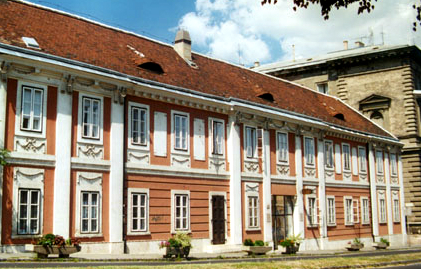
The Semmelweis Medical History Museum is a scientific complex, consisting of a library, an archive and a museum. Although their application for the title focused on the museum field, the judges did not separate the work of the two other sections.
The judges when examining the museum, could clearly realize the impact of the deliberate museum development on the functioning of the institution. The number of visitors increased significantly during the past period, the communication and public relations work became ever more important. The themes and creations of the new temporary exhibitions and the traveling expositions all had the result in making the museum more well-known home and abroad.
The professionals of the museum are rather successful in the field of preventive conservation. When creating traveling exhibitions they concentrate on the security and protection of works-of-art, but the constant supervision of the objects displayed in the permanent exhibition is an important feature of their every day work also.
The results of the digitizing of their collections are significant; the online digital photo collection is also under constant construction and development.
The exhibition work of the museum concentrated around temporary and traveling exhibits. The management of the museum completed the design and project plan for a new permanent exhibition, though it is dependant on the renewal and possible expansion of the building.
The exhibition ”Demonic Infection : The Plague” won the Award for Excellence of the Ministry of Education and Culture in 2009; it was opened on 10 different locations in Hungary.
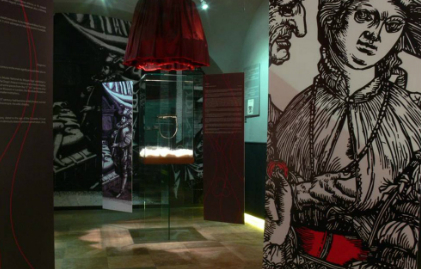
The exhibition ”Live Moral. From Post Mortem to Pathology” was awarded the „Pro Pathologia Hungarica” Prize in 2010.
The exposition „ Secret Stories of the Chastity Belt. Myth and Reality was ranked among the best ten shows of the year by the website fidelio.hu in 2010.
At present the exhibition The Wounded Görgei can be seen within the walls of the museum.
The pedagogical programs of the museum are closely connected with their exhibitions. Programs are arranged for children of all ages, from nursery and primary schools to secondary schools. During the last 2 school years two projects were created for children titled Microcosmonauts – Travels to the Depth of the human Body, and Laboratory of Living. More than 5000 schoolchildren took part in these programs.
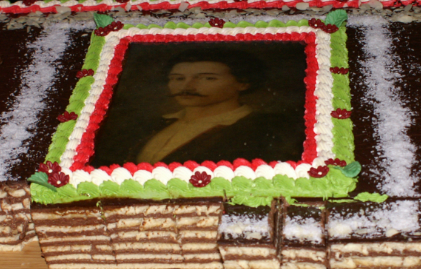 The Petőfi Memorial Museum and House (Kiskőrös) was the first literary memorial museum in Hungary, opened by the great novelist Mór Jókai. This building was the first „stone” in the museum complex of today.
The Petőfi Memorial Museum and House (Kiskőrös) was the first literary memorial museum in Hungary, opened by the great novelist Mór Jókai. This building was the first „stone” in the museum complex of today.
All 3 elements of the building complex sustained by the local municipality (the Petőfi Memorial House, the Petőfi Memorial Museum, the Slovak Regional House) show the development of the past years. The results are the living proof of the blending of the local resources with the support of the regional and state tenders. For many years now the professionals of the museum utilize every possible resource to carry on with the developing of the institution.
Of the 3 buildings the Petőfi Memorial House serves as the place of the cult of the poet, the new exhibition arranged in it is a significant development of the recent period.
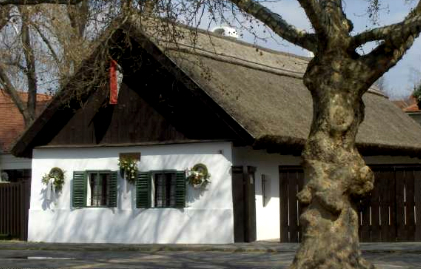
The second element of the system is the Slovak Regional House, which is part of the successful network of regional houses. In the Memorial Museum the permanent exhibition presenting the history of the settlement is yet to be modernized.
It can be stated without doubt that the museum complex has a central role in the cultural life of the town and the people of the surrounding settlements; the visitors feel at home within the walls of the memorial museum and home.
Special Prizes
The Special Prize of the Hungarian National Museum was awarded to the Báta Regional House
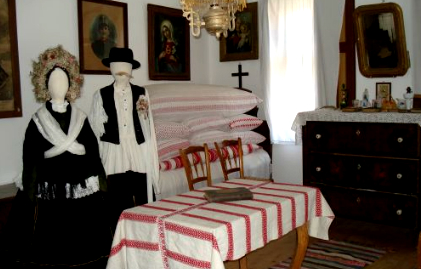
The Báta Regional House, established in 1990, has been carrying out the task of spreading the knowledge of the region’s cultural heritage on a high level. In the Farmers’ House permanent and temporary exhibitions can be seen, in addition the building serves as the place for cultural programs and events. In the Fishermen’s House the traditional is presented. The staff of the museum systematically collects and preserves the traditions of the Sárköz Region, their work is thorough, well planned and up-to-date. The implementing of the non-profit resources is further supported by the Public Fund for the Regional House and Folk Traditions, established in 2003.
The museum is one of the founders of the Association of Hungarian Regional Houses, it gained the ”Regional House of the Year 2005” title, in 2007 it was awarded the Special Prize of the Museum Department of the Ministry of Education and Culture. The museum professionals provide a constant high standard of services for the public, which appreciates it and that was quite apparent for the judging committee as well.
The joint prize of the ICOM Hungarian National Committee and the Pulszky Society was awarded to the Sándor Petőfi Museum (Szalkszentmárton), for the renewed permanent exhibition, for modernizing the public relations works and for the role in playing in the cultural life of the community and the region.
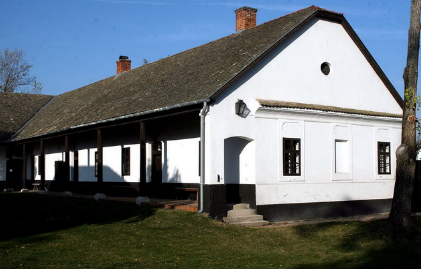
The original building was rented by the Petőfi family in 1845-46, during that period the poet spent several months here. The house became a memorial museum in 1972, as part of the network of the Bács-Kiskun County Museum Organization. In 2008 the building was renewed and modernized, and expanded with storages. In the framework of the Renewal of the Hungarian Literary Memorial Houses the exhibitions were rearranged. They are concentrated around 4 main themes: 1. the economical activities of Petőfi’s parents, Petőfi and his parents in Szalkszentmárton, the former living room of the poet and the buildings and accessories of the former inn.
The museum is an important part of the cultural life of the region, ikts staff is open to new developments and expansions and committed to the task of facing new challenges.
Certificates of Merit
The Völgység Museum

One of the most significant, historic building of the town of Bonyhád serves as the home of the Bonyhád Museum, whose permanent exhibition was created in 1987, using the collections of the Szekszárd Museum. The collection is based upon the ethnical, religious, industrial, agricultural diversity of the Völgység Region. This diversity enables the staff to create and renew 6 different expositions and several museum pedagogical programs. In the main building the permanent exhibition, titled "Life and History of the people of the Völgység Region" can be seen, presenting the objects of the every day life of the populace. Further expositions can be visited at the House of Germans, the House of Szeklers and the Village House of Kakasd. The museum professionals utilize all possibilities to take part in the every day life of the local community; workforce of disabled people is regarded with extra attention: it is evident to the management of the museum that the employing of such citizens can only strengthen the ties between the museum and the community.
The Bakony Natural History Museum (Zirc)
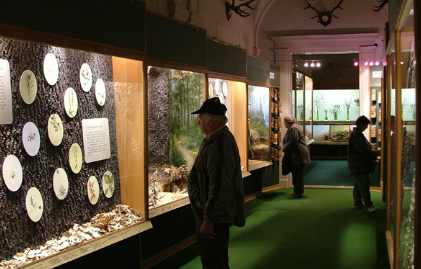
The museum’s research work covers the Bakony Region. It has strong ties with other Hungarian and non-Hungarian natural history institutions and universities. The members of the staff have all degrees in natural history but during their everyday work have museum pedagogical tasks to complete. Their most important work naturally are collection management and scientific research. The financial circumstances were rather harsh during the past years still some improvements could be achieved. A former school building of the Cistercian order was renewed and is used for museum purposes.
They implemented their new results in their permanent exhibitions, such as the fossil finds of 2006. Without space for temporary exhibitions a corner was created for the presentation of several different themes. Thanks to their traveling exhibitions the museum has the chance to visit schools, nursery-schools, social events.